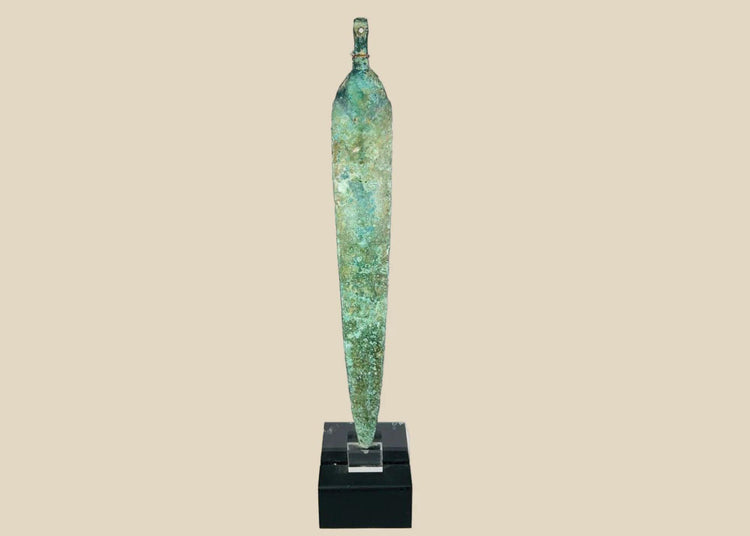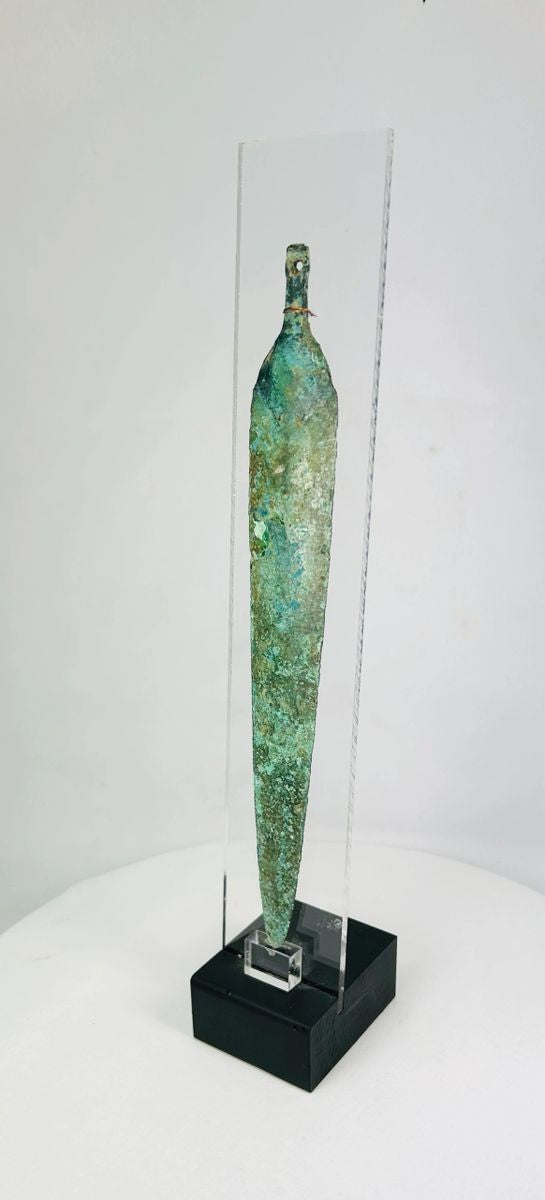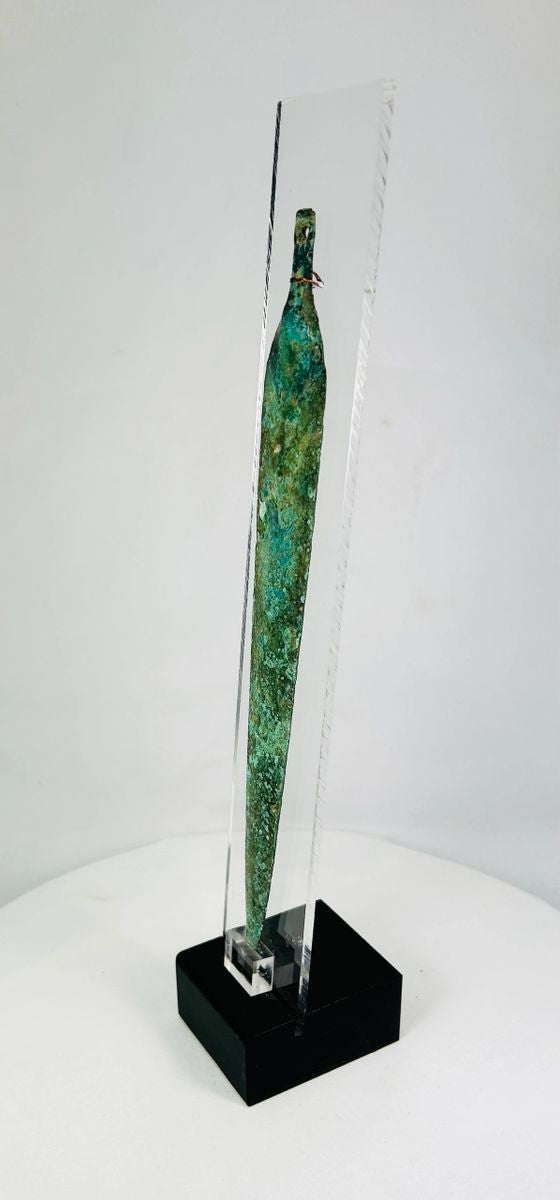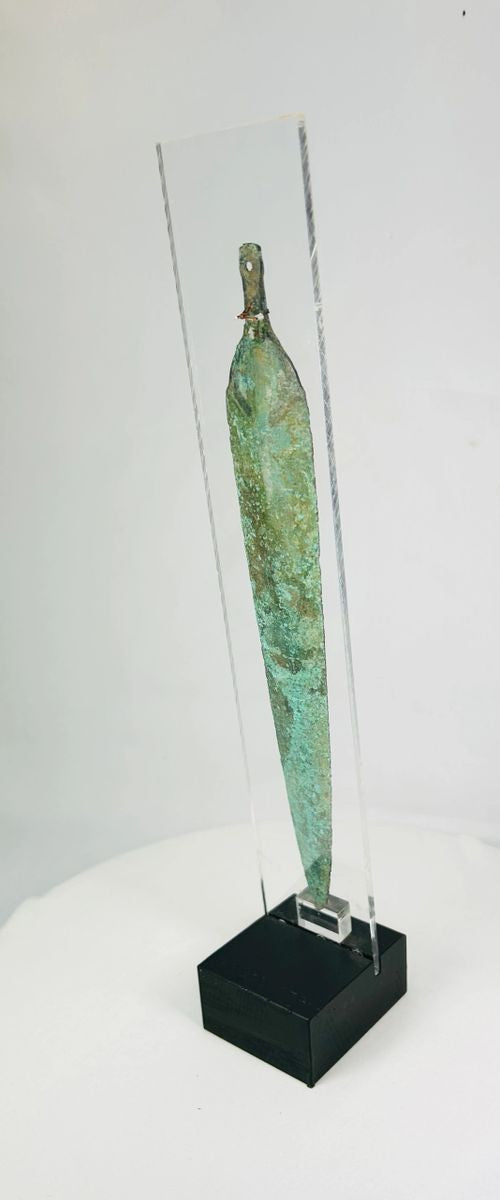Western Asiatic | Bronze Dagger Blade | Circa 1st Millennium BCE
Description
More
Less
Historical Context & Origin
Region: Western Asiatic (Near East, encompassing modern-day Iraq, Iran, Syria, Turkey, Israel, Lebanon, and Jordan)
Material: Cast bronze
Period: 1st Millennium BCE
Description
This ancient bronze dagger blade represents the metallurgical and artistic achievements of the Western Asiatic world during the Bronze Age. With its imposing form and refined craftsmanship, the piece reflects both practical utility and symbolic significance. Weapons such as this were essential not only for survival and defense but also as expressions of power, ritual devotion, and status within early civilizations.
Features
- Tapered blade form with a strong central spine for durability
- Perforations near the base for attachment to a now-lost handle
- Distinctive green patina with red and brown earthen tones from burial
- Measures approximately 15 inches in length, making it a substantial and visually striking artifact
Cultural Significance
Bronze weaponry was a cornerstone of ancient Near Eastern culture, reflecting the technological advancements of the time. This dagger blade likely served dual purposes: as a practical weapon in combat and as a ceremonial object symbolizing protection, authority, and warrior identity. Its survival into the present offers a rare glimpse into the ways ancient societies blended functionality with spiritual and cultural expression.
Condition
The blade remains structurally intact despite centuries of aging. The surface exhibits natural corrosion and an uneven texture consistent with ancient burial, while the vibrant patina attests to its authenticity and antiquity. The perforations for handle attachment remain visible, though the organic handle has long since vanished.
Dimensions (approximate)
Length: 15 in
Age
Circa 1st Millennium BCE
Description
Historical Context & Origin
Region: Western Asiatic (Near East, encompassing modern-day Iraq, Iran, Syria, Turkey, Israel, Lebanon, and Jordan)
Material: Cast bronze
Period: 1st Millennium BCE
Description
This ancient bronze dagger blade represents the metallurgical and artistic achievements of the Western Asiatic world during the Bronze Age. With its imposing form and refined craftsmanship, the piece reflects both practical utility and symbolic significance. Weapons such as this were essential not only for survival and defense but also as expressions of power, ritual devotion, and status within early civilizations.
Features
- Tapered blade form with a strong central spine for durability
- Perforations near the base for attachment to a now-lost handle
- Distinctive green patina with red and brown earthen tones from burial
- Measures approximately 15 inches in length, making it a substantial and visually striking artifact
Cultural Significance
Bronze weaponry was a cornerstone of ancient Near Eastern culture, reflecting the technological advancements of the time. This dagger blade likely served dual purposes: as a practical weapon in combat and as a ceremonial object symbolizing protection, authority, and warrior identity. Its survival into the present offers a rare glimpse into the ways ancient societies blended functionality with spiritual and cultural expression.
Condition
The blade remains structurally intact despite centuries of aging. The surface exhibits natural corrosion and an uneven texture consistent with ancient burial, while the vibrant patina attests to its authenticity and antiquity. The perforations for handle attachment remain visible, though the organic handle has long since vanished.
Dimensions (approximate)
Length: 15 in
Age
Circa 1st Millennium BCE
You May Also Like


























